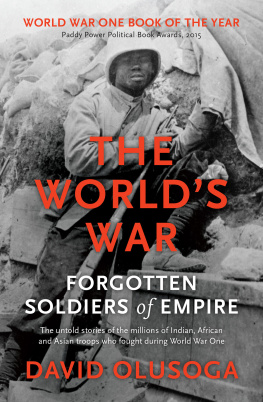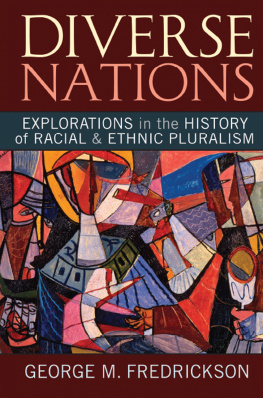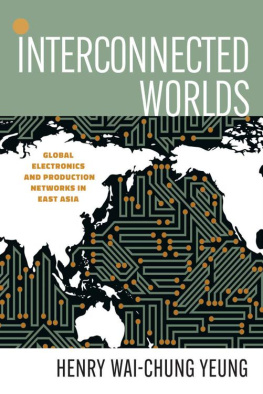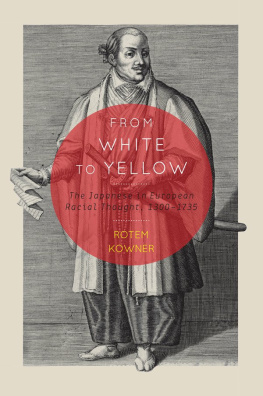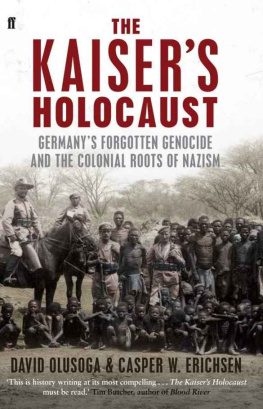


www.headofzeus.com
For Mrs Marion Olusoga, to whom I owe everything
Contents
A new concept the worlds war
India in Europe the martial races
Imperial dreams, African nightmares
Africa in Europe the races guerrires
The Kaisers Jihad
Polyglot PoWs and German schemes
The Western Front a global city
Siam, segregation and the Harlem Hellfighters
Remembering, resenting and forgetting
The Empire Needs Men poster (1915) by Arthur Wardle / Library of Congress
The First World War Deeds of Corporal Mike Mountain Horse / Collection of the Esplanade Museum, Medicine Hat, Alberta, Canada
Encampment of the 3rd (Lahore) Division on Marseilles racecourse (1914), photographed by Horace Grant / Mirrorpix
Indian soldier cooking / Bain Collection (Library of Congress)
Lieutenant General Sir James Willcocks / Bain Collection (Library of Congress)
Mir Dast on the terrace of Brightons Royal Pavilion Hospital (1915) / Royal Pavilion & Museums, Brighton and Hove
Patients and staff beneath the dome of the Royal Pavilion Hospital, Brighton / Royal Pavilion & Museums, Brighton and Hove
Gurkhas and Jats, all ranks, of the Indian Corps (23 July 1915) / Wikimedia (Government of India, 1915)
Indian Corps troops in late 1915 / By kind permission of Dominique Faivre
Alhaji Grunshi (1918) / Wikimedia Commons
Colonial troops in Ebolowa, German Cameroon / Bain Collection (Library of Congress)
Indian dead after the Battle of Tanga (1914) / Deutsches Bundesarchiv
General J.C. Smuts / Bain Collection (Library of Congress)
Carriers serving the Schutztruppe of German East Africa / Deutsches Bundesarchiv
German colonial war funds poster depicting von Lettow-Vorbeck (1918) / Library of Congress
Cover of the book Heia Safari! / By kind permission of Tim Kirby
Poster for Journe de lArme dAfrique et des Troupes Coloniales , by Lucien Jonas / Library of Congress
La Tache Noire (1887), painting by Albert Bettanier / Wikimedia Commons
La Force Noire (1910), book by Charles Mangin / BDIC
Photo-portrait of General Charles Mangin / Wikimedia Commons
The 43rd Battalion, Tirailleurs Sngalais , after the retaking of Douaumont / authors collection
Cover of Le Rire Rouge (17 February 1917) / authors collection
Wartime advertisment for Banania chocolate drink / Getty Images
Cover of German magazine Lustige Bltter / By kind permission of Paul Van Damme
Max von Oppenheim in the tent of Ibrahim Pasha (1899) / Max Freiherr von Oppenheim-Stiftung / Hausarchiv Bankhaus Sal. Oppenheim Jr. & Cie., Cologne
Kaiser Wilhelm II, the Sheikh ul-Islam, Sultan Mehmed V and Enver Pasha (1917) / Deutsches Bundesarchiv
Sherif of Medina preaching Jihad (1914) / World War I in Syria and Palestine album (Library of Congress)
Turkish infantry column at rest (1915) / Bain Collection (Library of Congress)
Senussi fighters riding to war in Egypt (1915) / Bain Collection (Library of Congress)
Poster for Journe de lArme dAfrique et des Troupes Coloniales , by Lucien Jonas / Library of Congress
Postcard of the Halbmondlager mosque (1916) / halfmoonfiles.de (presspack for The Making of the Halfmoon Files)
Page from the Halbmondlager newspaper (1917) / Europeana 19141918 (Berlin State Library)
Wounded Tirailleur Sngalais in German captivity / Bain Collection (Library of Congress)
Gurkha PoW recording his voice at the Halmondlager / halfmoonfiles.de (presspack for The Making of the Halfmoon Files)
Kaiser Wilhelm II at Carl Hagenbecks zoo (1909) / Deutsches Bundesarchiv
Prisoners of war at Wnsdorf, Zossen / Bain Collection (Library of Congress)
Algerian Tirailleur (1914) / Bain Collection (Library of Congress)
Fijian Labour Corps volunteers (1917) / Wikimedia Commons
Men of the South African Native Labour Corps queuing for bathroom (1917) / Imperial War Museum
Chinese Labour Corps entertainments at Etaples (1918) / Wikimedia
Chinese Labour Corps at work at the Tank Corps Central Workshop / Australian War Memorial
Labourers from French Indochina / BDIC
King Vajiravudh (Rama VI) of Siam (1915) / Getty Images
Recruitment poster for the British West Indies Regiment / Library of Congress
True Sons of Freedom, poster for encouraging African- American recruitment (1918) / Library of Congress
Film poster for the release of D.W. Griffiths Birth of a Nation (1915) / Wikimedia Commons
Postcard of African-American recruit / Gladstone Collection (Library of Congress)
Senator James K. Vardaman of Mississippi ( c . 1915) / Bain Collection (Library of Congress)
W.E.B. Du Bois / Wikimedia Commons
General John Pershing / Wikimedia Commons
Sergeant Henry Johnson (1919) / Wikimedia Commons
The 369th US Infantry in France (1918) / Wikimedia Commons (National Archives and Records Administration)
Lieutenant Colonel von Lettow-Vorbeck in Dar es Salaam after his surrender (1919) / Deutsches Bundesarchiv
Protest of German women against the coloured occupation on the Rhine, poster (1920) / Library of Congress
Karl Goetzs medal Die schwarze Schande (1920) / private collection
US photojournalist Helen Johns Kirtland inspects a beached mine / Kirtland Collection (Library of Congress)
The destroyed town of Lens after the war / Bain Collection (Library of Congress)
James Reese Europe and the band of the 369th (15th) US Infantry returning to New York (1919) / Wikimedia Commons (National Archives and Records Administration)
Gurkha troops at Londons Victory Parade (1919) / Imperial War Museum
I N THE MIDDLE of the 1960s my parents, only recently married, journeyed to my fathers homeland of Nigeria on a ship called the MS General Mangin . Built at St Nazaire in 1953, the liner ran a service from Marseilless ancient harbour to Point-Noire on the coast of the former French Congo (now the Republic of Congo, or Congo-Brazzaville). By the 1960s, the passengers who filled her cabins were French, British and African, many of them the citizens of now-independent African nations. They were officials, expats, businessmen, students and entrepreneurs. To my mother, and indeed to most of the non-French passengers on board, the ships name meant nothing; but to the French passengers, veterans of the baccalaureate, the name of Charles Mangin was a familiar one. It was Mangin, the firebrand general, who had earned himself the nickname the Butcher for his actions on the Western Front during the First World War; and it was Mangin who had, in the years leading up to 1914, convinced himself and soon millions of his countrymen that Africa was a vast reservoir of men, the human raw material from which France might forge new legions to help overcome the military might of Germany.
When the General Mangin landed in Lagos in 1966 to deposit my parents, there were still millions of men and women on the African continent who remembered the First World War, people who had seen the French recruiting parties scour the villages of West Africa for men to serve, turning Mangins theories into reality. In the port town of Dakar, in Senegal, where the General Mangin had earlier called, lived the last of the Tirailleurs Sngalais , Mangins army of West African soldiers, who could count among their honours the titanic battles at Verdun, Ypres and the Chemin des Dames. Other Africans, in East and Central Africa, could recall the suffering and hunger that befell their communities when the war against the German colonial forces swept through their fields, towns and villages. In Nigeria there were still veterans of the West African Frontier Force, men who had fought against other Africans recruited by the Germans to defend the Second Reichs colonies of Cameroon and German East Africa.
Next page
